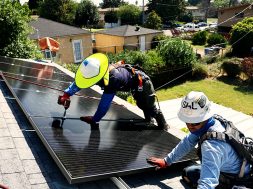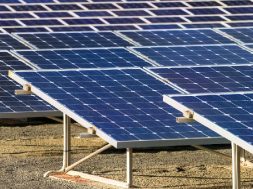
Indian solar sector SOS: SLDCs Own the Sun
According to Bridge to India, a consultancy, 35 tenders with an installation capacity of 15.5 gigawatt (GW) were announced by India in 2015, a quantum leap from an annual capacity addition of 1GW for three consecutive years until 2014. Despite the large capacity on offer, we saw aggressive bidding under Rs.5 per kilowatt hour (kWh). And big developers, including Renew Power Ventures Pvt. Ltd, Tata Power Co. Ltd and Adani Power Ltd, won contracts at sub-Rs.5 per kWh.
No doubt there has been some reduction in equipment prices, but does it justify these price levels? There are some inherent assumptions in these prices, including a flawless execution with no big issue in land acquisition, perfect financing with no changes in interest rates for a long term, solar panels working at their published efficiency for full 25 years, the distribution company buying and paying for all the power and 100% availability of the transmission grid.
While many of the above bugbears are yet to be encountered, the risk of the transmission system not being available is coming true in Tamil Nadu. The state boasts 1,150 megawatt (MW) of solar power generation capacity, and is targeting more additions to its installed capacity, but it has been recently reported in a number of newspapers that a majority of the installed capacity is being asked to back down. In a representation to the Union ministry of new and renewable energy and to the Tamil Nadu Generation and Distribution Corp. Ltd, the industry body Solar Power Developers Association has reportedly said developers are facing 50-100% “generation curtailment” during peak generation periods. The result: not enough revenues, as were projected, for investors.
Now, this reduction in revenue is not because of a regulatory intervention to reduce tariffs though it is known that tariffs in some of these projects were higher than the prevalent market prices for projects of the same vintage. Thankfully, for investors, this issue has been settled by the Appellate Tribunal for Electricity (APTEL) in a 2013 dispute wherein Gujarat Urja Vikas Nigam Ltd attempted to renegotiate its solar power purchase agreements (PPAs), after the plants were operational. APTEL had rejected the appeal saying it had no merit, reassuring investors who feared India would go the way of Spain and Greece in retrospectively amending feed-in tariffs or imposing retrospective taxes for renewable energy.
But the distribution companies have another trick up their sleeve to bypass the regulatory system. This is the oft-used grid instability threat and asking selected generators to back down. While in a country such as Germany, large fossil fuel-fired plants are asked to back down in case of an oversupply, in India, smaller renewable energy plants face the brunt of grid oversupply or transmission overloading. There is no foolproof way of knowing if, indeed, the grid was under threat at that moment or not.
Who decides it then?
The state load dispatch centres (SLDCs), who are now the owners of the power generated by Sun. Based on the convenience of their affiliate utility companies, SLDCs can manage which plants should be on the dispatch curve and shouldn’t be, leaving the bleeding generators completely hapless. In the earlier versions of the PPAs, the risk of transmission unavailability was borne by the buyer, but in the last decade that clause has been eased out, citing the segregation of the load dispatch functions from the buyer distribution company though they still remain under the same ownership.
Creating large-scale transmission lines that can serve multiple states seems to be a possible answer. There have been talks of green corridors with funding from KfW (a German government-owned development bank based in Frankfurt) earmarked for that purpose, but the on-ground work still seems to be in early stages. And just like other infrastructure projects, it is the implementation challenges on land, right of way and forest clearances that can significantly delay the projects even further. Any large-scale transmission projects will take two to four years to be implemented and in contrast, wind and solar projects are delivered within three to nine months after start of work. This is what creates significant mismatch in our expectations regarding solar capacity addition of 100GW by 2022 and what can actually be delivered on the ground.
If we really want to push our utility-scale solar capacity addition programme, there is no solution other than creating larger transmission capacity that can provide sufficient evacuation across the country. We do not want to have idling solar plants like we have in coal and gas.















